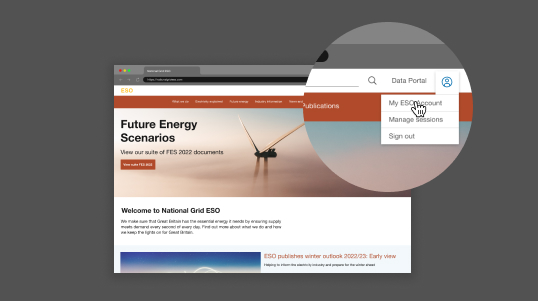Dynamic Containment (DC), Dynamic Moderation (DM) and Dynamic Regulation (DR) make up our new suite of Dynamic Response Services. Together they work to control system frequency and keep it within our licence obligations of 50Hz plus or minus 1%. DM provides fast acting pre-fault delivery for particularly volatile periods, and DR is our staple slower pre-fault service. DC is our post-fault service.
Please note this does not include our Dynamic Firm Frequency Response (FFR) service which is being replaced with these new dynamic services and phased out FY23/24.
Here are summarised the technical requirements for a unit to provide each one of the services:
| Service specification | Description | DC | DM | DR |
|---|---|---|---|---|
| Initiation time | The maximum time between a change in frequency and change in the delivery of response | 0.5s | 0.5s | 2s |
| Max time to full delivery | The maximum time between frequency devition occurring and delivery of the saturation quantity | 1s | 1s | 10s |
| Delivery duration | Time that an energy limited provider must be capable of sustained delivery | 15 minutes | 30 minutes | 60 minutes |
If you are a new provider, the New Dynamic Response Services Guidance can support you in your onboarding journey.
DC DM DR onboarding Check list
Below is an onboarding check list of all the Pre-qualification requirements that need to be completed before a unit can enter the Dynamic Containment, Dynamic Moderation and Dynamic Regulation auctions.
| DC DM DR Onboarding Checklist | ||||
|---|---|---|---|---|
| BM units | Provider / Unit level | Non BM units | Provider / Unit level | |
| Asset testing per service | Unit | Asset testing per service | Unit | |
| Operation metering | Unit | Operation metering | Unit | |
| Data Concentrator - Performance monitoring | Provider | Data Concentrator - Performance monitoring | Provider | |
| Data Concentrator - Availability | Provider | Contract Forms ABC | Provider | |
| Contract Forms ABC | Provider | Asset registration on SMP | Unit | |
| Asset registration on SMP | Unit | Provider registration on SMP | Provider | |
Publication of auction results:
The DC DM and DR auctions are run on the EPEX platform. You can access daily-updated data from auction results through the ESO Data Portal.
Adding assets to your system:
As a registered provider, you can add new assets via the Single Markets Platform.
Performance Monitoring support:
To support the Performance Monitoring data upload process, we have published the DM/DR/DC Performance Monitoring CSV template that is expected to be transferred to our data concentrator API by providers.
Data Concentrator:
Data Concentrator is the channel by which both BM and non-BM providers will share performance monitoring data. For the launch of DM/DR, BM providers will also submit availability information via Data Concentrator, using the Notification of Availability/Outage CSV File Format. This will replace the current fax-based process for submitting availability declarations. The availability field in operational metering will also be deprecated in favour of the Data Concentrator route.
Settlements Information:
Payments for response services are handled by our settlements team.
All documents relating to New Dynamic Services are available here to download, including previous archived versions.
Guidance and supporting documents
Archive
EAC BCP templates
| Name | Published Sort ascending |
|---|---|
| EAC tender template | 29 Jan 2024 |
| EAC provider data template | 29 Jan 2024 |
Information for non-BM providers
To participate in DM and DR, non-BM providers will need to communicate via an API-based interface with the ESO’s Non-BM Dispatch system, Ancillary Services Dispatch Platform (ASDP)/Platform for Ancillary Services (PAS). Testing and approval of this interface will form part of the prequalification process.
Updated versions of the ASDP Web Services Specification and Business Logic Document can be found below.
The Web Service Specification document describes the most recent version of web services to be implemented from both National Grid ESO (PAS) system and Service Providers’ systems. It also describes the technical specifications including Web Services Description Language (WSDLs) and XML Schema Definition, methods and parameters to be used to invoke the WSDLs, connection patterns and protocols, security measures. The validations and exceptions are particular to each ancillary service and hence these will be published as a separate ‘Business Logic Document’ for each ancillary service.
Market engagement 2024
September webinar
May webinar
| Frequency Response Reform webinar recording - 15 May 2023 |
| Frequency Response Reform webinar slides - 15 May 2023 |
2022
Market engagement 2020
- Frequency Response Products Market Information Reports
Podcast/videos
- Podcast on Dynamic Containment (26/6/20)
- Service Terms video (the PowerPoint version can be accessed below in the document library) (4/9/20)
Webinars
- Webinar recording of the soft launch webinar on 18 August (21/8/20)
- Procurement rules and process webinar and slides (4/9/20)
- Onboarding webinar and slides (4/9/20)
- Testing webinar and testing guidance (4/9/20)
- Mock tender review webinar (28/9/20)
Consultations
- EBGL Article 18 Dynamic Containment consultation (21/8/20). Following the consultation, Ofgem have approved the final Terms and Conditions and associated contractual documents. Alongside the Article 18 submission, NGESO also submitted an EBGL Article 26 document and a derogation related to Clean Energy Package Article 6(2), which were both approved. We submitted a letter to Ofgem following the end of the EBGL consultation which includes the consultation responses from providers.
- EBGL Article 26 Dynamic Containment consultation (Oct 20) on the use of Dynamic Containment as a specific product. In the previous consultation, Ofgem approved the proposal we submitted on this but it was on the condition that we held a full consultation in October. The consultation was open until 30 November.
Assessment information
Results from the tenders are published on the ESO Data Portal.

Single Markets Platform
The Single Markets Platform will be the route through which interested parties are able to register and pre-qualify to participate in day ahead frequency response markets of DC, DM and DR.
The SMP system is replacing the Form A, B and C process and putting the ownership of data in the hands of the market participant. You can register as a user, share your company details, register assets, create units to participate in services and seek to prequalify such units.
We also have a dedicated Single Markets Platform page where you can find supporting guidance videos and user guides.

Further enquiries
Get in touch with the right team within Balancing Services, who are on hand to answer any questions you may have.

